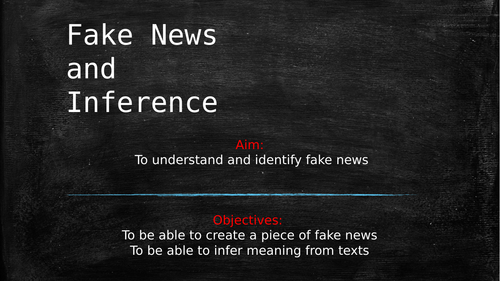
Lesson one:
"The lesson begins with the lecturer explaining the meaning of inference. Students are then split into groups and given a series of tweets, from which, they have to decipher who would be behind a story like this? What would they have to gain? What can we infer?
Students are then asked to create two fake news tweets/facebook posts of their own. Finally, students will be asked to answer write a brief summary outlining their views on the point: There are two opposing views of whether hand guns should be outlawed. Some believe they cause crime, others believe they prevent it.
Write a brief summary of why you believe hand guns should be legal or illegal, depending on your viewpoint. Remember to mention the opposite argument and disprove it with your own.
"
Lesson two:
Students must first read the decription from The Maltese Falcon and draw the character as described. Students should then watch the video and answer the questions provided on screen. An extract from The Girl With The Dragon Tatoo will then be dislpayed. Learners should then search the text to answer the questions provided on the board. Students are the given an individual task to use descriptive language to provide a vivid description of a criminal that the learners have just witnessed that could easily be translated by an artist – thinking about age, height, weight, hair colour, eye colour, facial features, clothing and anything else that may be useful.
Lesson three:
The lessons starts with reading the text from the board and answering the questions provided. Students should then turn to a blank page in their books and write on each line ABABABA. Learners have to imagine they were in a bank and three masked men walked in to rob it. They should then write a brief account for police about being in the bank as it happened and describe in as much detail as possible. Students should only write their account on the A lines. The youtube video should then be played and students should take notes throughout this. Now, lecturers should then explain to the learners the definitions of metaphors, similes and alliteration. Students should then, on all the ‘B’ lines, set about replacing their description with language features and extended vocabulary. Lecturers can then mark the learners’ improvements.
Something went wrong, please try again later.
This resource hasn't been reviewed yet
To ensure quality for our reviews, only customers who have purchased this resource can review it
Report this resourceto let us know if it violates our terms and conditions.
Our customer service team will review your report and will be in touch.
